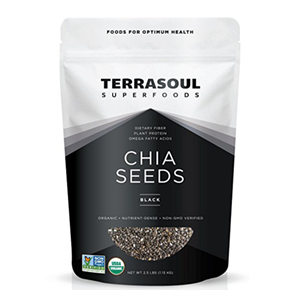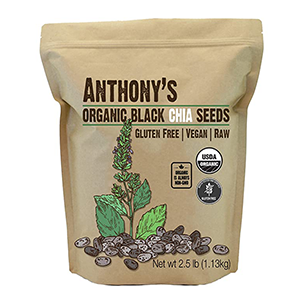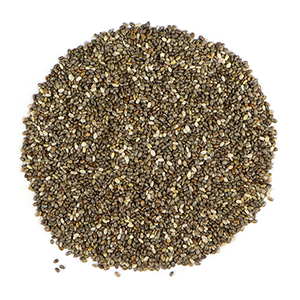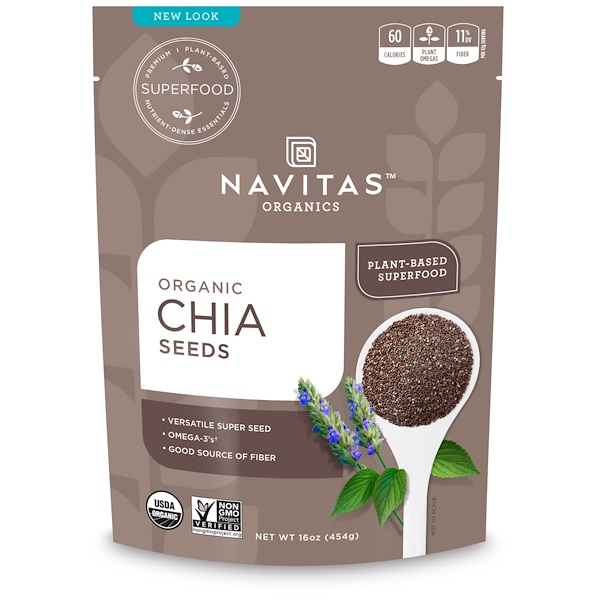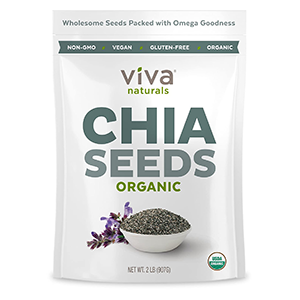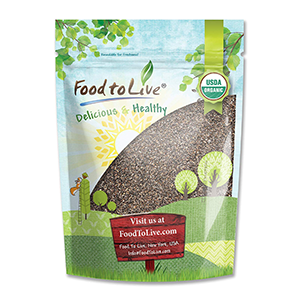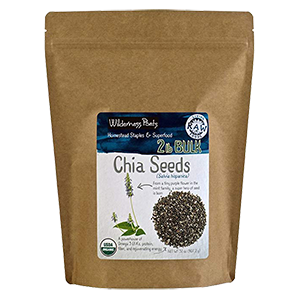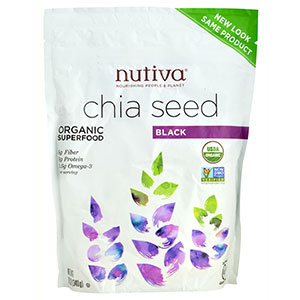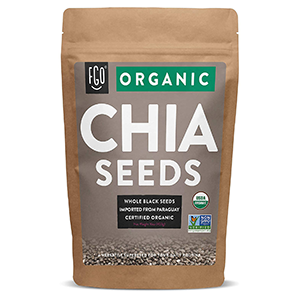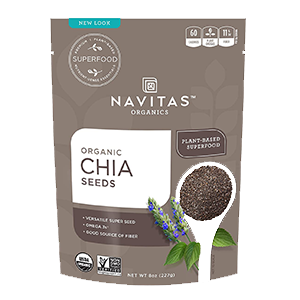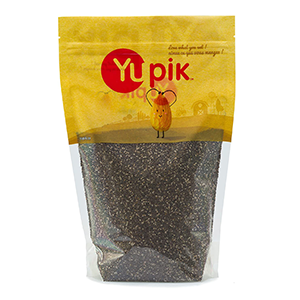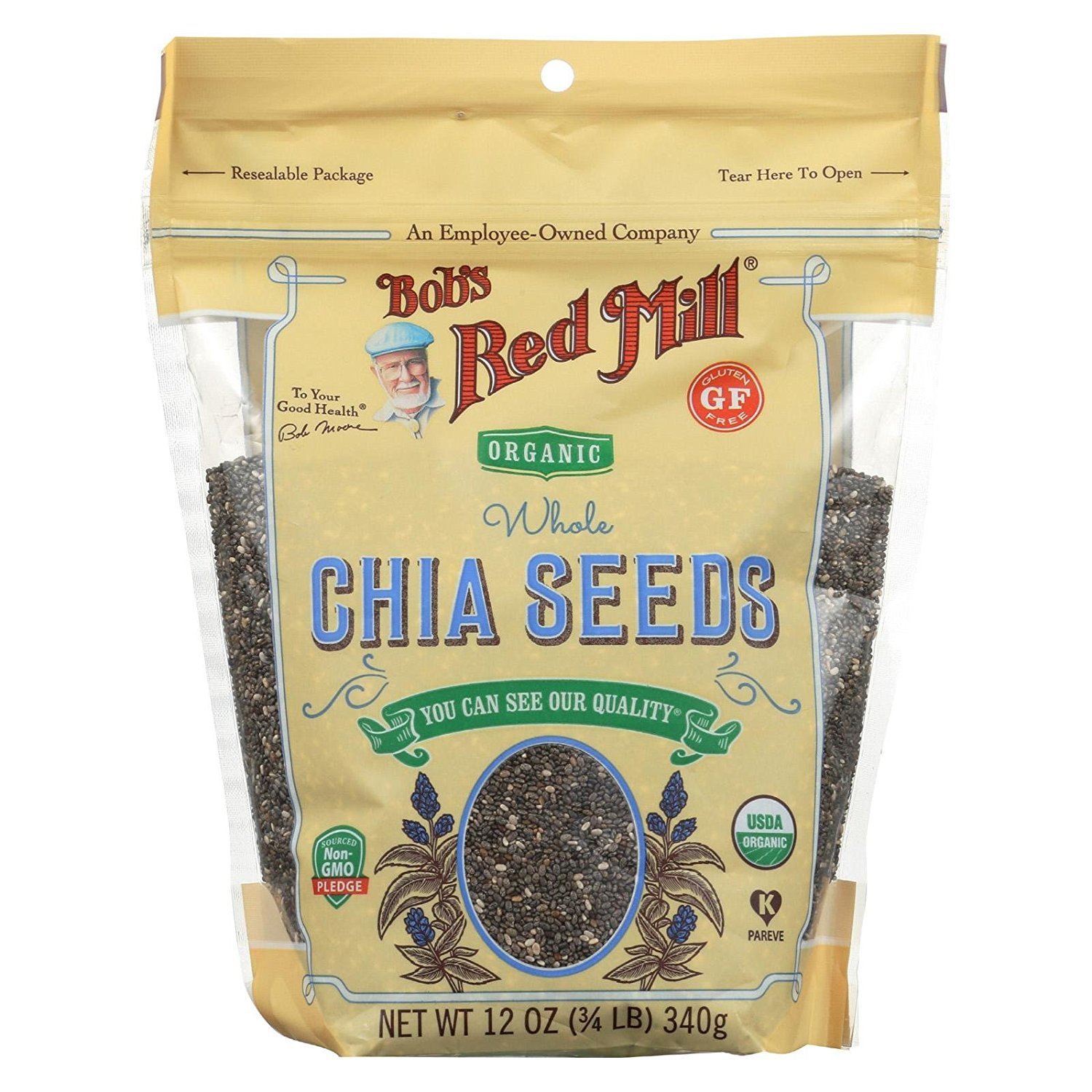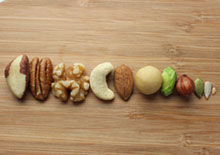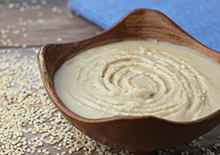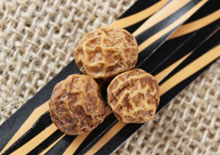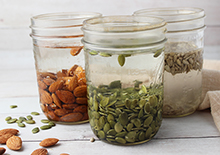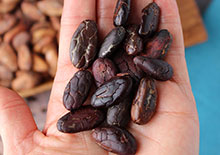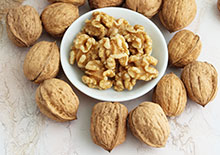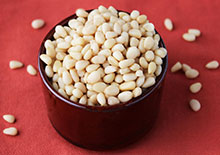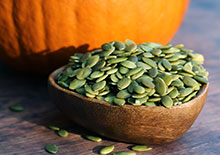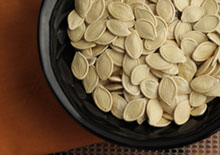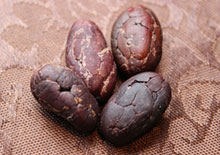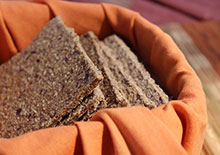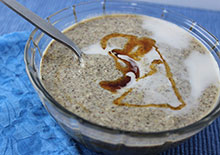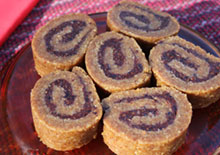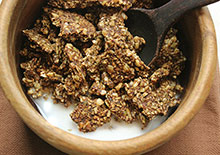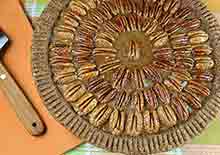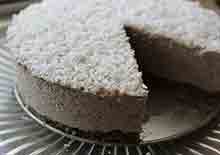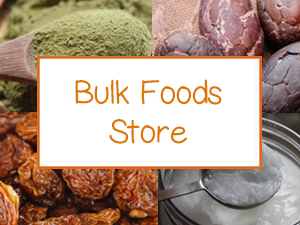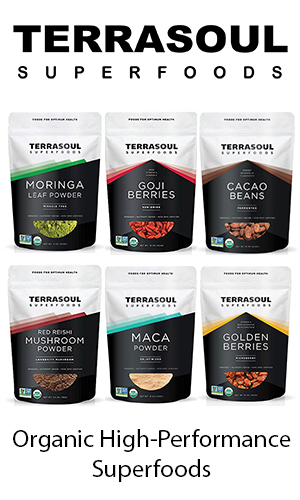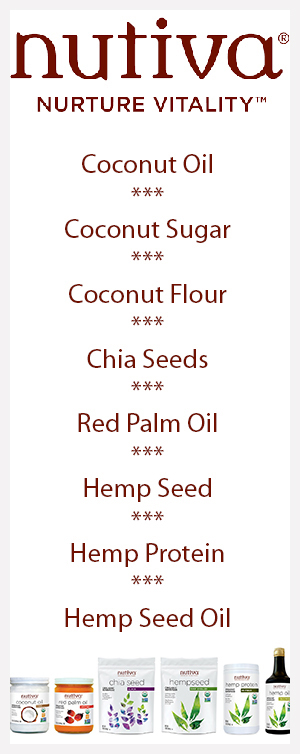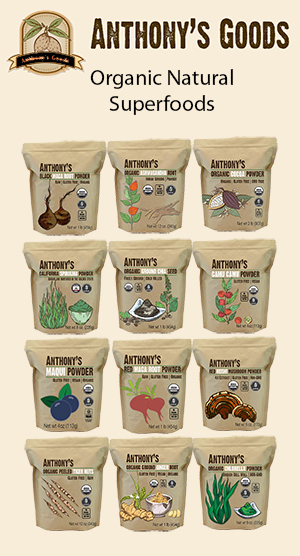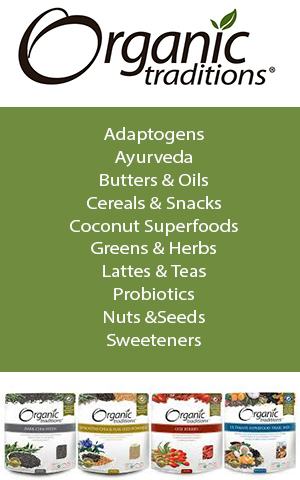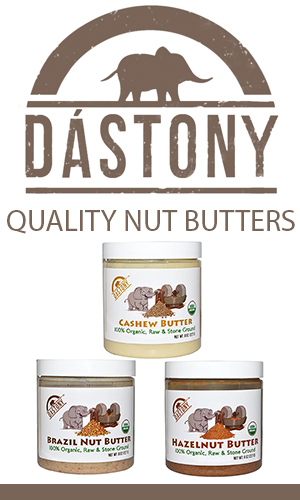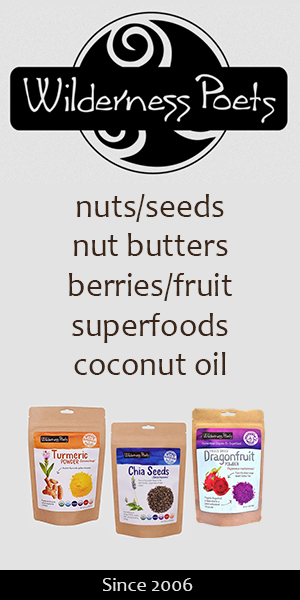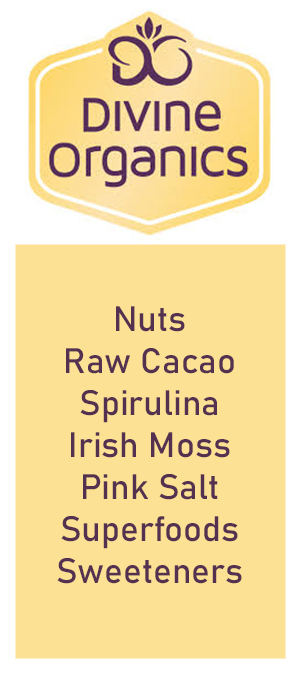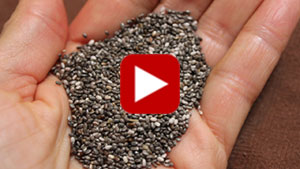- Home
- Nuts and Seeds
- Chia Seeds
Chia Seeds, for Sustained Energy and Hydration
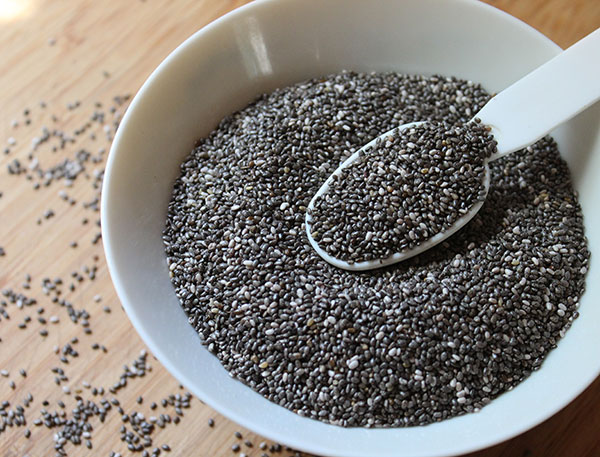
Chia seeds are one of the new top superfoods to become popular during the last decade, since the late 1990's, and now their many nutritional benefits are catching up to a much wider audience. Most every health-conscious person these days know about chia and how they can be an especially great dietary adjunct to add to blended drinks.
We personally started using the seeds in about 2003 when they became more available in bulk sections of large chain health food stores.
Now you see them in many commercial products such as protein bars, dehydrated crackers, granolas, kombucha drinks as well as for sale by the pound as dried seeds or ground powders.
They have certainly become one of our top favorites next to hemp seeds for a number of reasons. In a "nutshell", they have a dense amount of nutrition, very few calories and are packed with fiber, protein, antioxidants, calcium and the hard to get omega-3 fatty acids.
The chia seed is quite a tiny little thing, but when soaked in water it swells up to 10-12 times its original size, creating a gelatinous coating or seedy gel that can be blended and used in shakes, desserts, smoothies, porridge and puddings.
They are the perfect seeds to add extra creamy thickness to many recipes or are also used soaked and blended as an egg replacement.
Their unique hydrophilic properties not only provide benefits as a thickening agent, but simultaneously help to recharge and hydrate the cells.
Historical Use of Chia Seeds
The wild chia plant (Salvia hispanica) is native to central and southern Mexico and Guatemala. Chia was cultivated for use as a staple food crop, grown next to corn, by the pre-Columbian Aztec civilization.
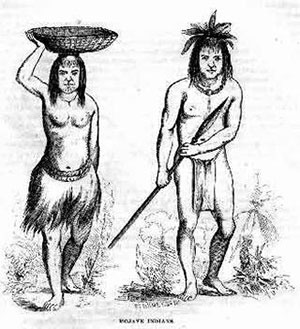
Chia is derived from the word "chian", which means "oily" in the Nahuatl language. The seeds were traditionally used as a flour, pressed for their oil content or mixed with water and consumed. (Source)
It was used by the Aztecs as an ingredient in a corn based gruel known as Pinole, which is still prepared today in modern-day Mexico. It was also roasted and ground to make a flour called Chianpinolli. This was further used to make tortillas and tamales. In Mexico they use it in a drink called "chia fresca", which is chia soaked in fruit juice.
Wild chia seeds have prolifically spread to many desert locations of the Southern U.S. and we have actually seen it growing prolifically in areas of Joshua Tree National Park and Chochella Valley of Southern California.
According to the book Temalpakh, Cahuilla Indian Knowledge and Usage of Plants, the Cahuilla Indians of these regions used it quite a bit for medicinal purposed as well as a food source.
The seeds were in fact known to be carried by many native tribes as a form of fuel to increase endurance on long journeys along trade routes. The Cahuilla Indians traveled with pouches of seeds and soaked them in gourds of water for hydrating and sustaining energy levels.
The Chia Plant
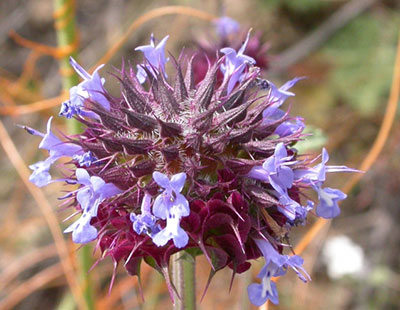
Salvia hispanica is a member of the mint family and an annual plant that grows up to about 3-4 feet in height and produces tiny clusters of purple or white flowers at the end of its stem.
The tiny oval seeds are about 1mm (very small) and are produced when it goes to seed after the warmer season. The seeds are typically multicolored and are either gray, black, white or brown.
The cultivated chia we consume today, according to our research, is not too far off from its wild origins.
Grow Your Own Chia
We always encourage growing your own superfoods and herbs whenever possible. Chia is one of those species that you can actually grow in your own garden in many parts of the world, generally USDA Zones 9-12.
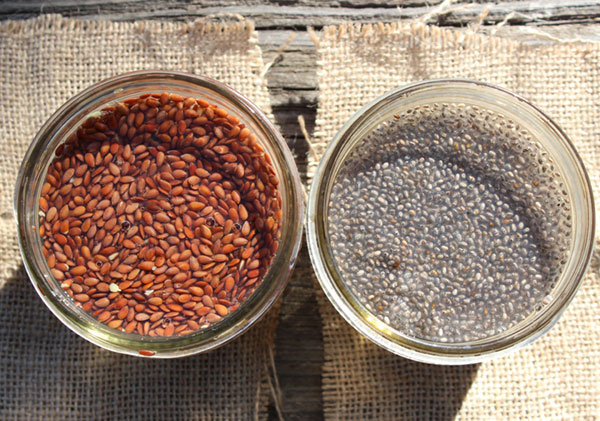
Chia Seed Vs. Flaxseed
Chia is very similar to flaxseed
in that they both contain high amounts of ALA omega-3's and also become
very gelatinous when soaked in water. They are both extracted for their
oils, but flax is more susceptible to rancidity and is extremely
volatile when exposed to light or heat.
This is not so much the case with the chia seed and because of this many people have switch over to using chia more as a replacement to flax in recipes. Chia is also a preferred variety because it doesn't have a strong flavor, like flaxseed, and is easily camouflaged into foods and drinks.
Check out our page on the main differences between Chia Vs Flax.
We personally prefer using chia seed rather than flax when making dehydrated bread and crackers. Flax is also known to contain high amounts of phytoestrogens, a type of estrogen derived from plants that has a tendency to mimic estrogen hormones in the body.
Chia, by comparison, is closer to a wild food and hasn't been as heavily cultivated as the flax plant, commonly called linseed, which has been used as a source of fiber or linen for many centuries.
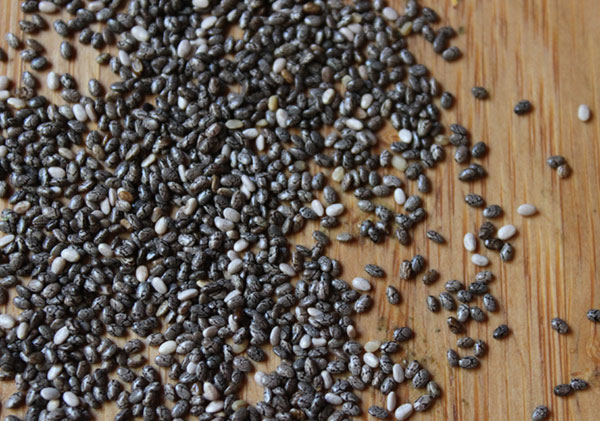
Chia Seed Benefits
High in Omega-3 Fatty Acids
Chia seeds are naturally high in polyunsaturated fatty acids called omega fatty acids. Like flax and hemp seeds, they are particularly high in the essential fatty acid omega-3 (alpha-linolenic acid or AFA).
According to Nutrition Data a 1 ounce (28g) serving of chia is about 4915 mg of omega-3 to 1620 mg of omega-6 (linoleic acid or LA). This is about a 3:1 ratio of omega-3 -to- omega-6, which is very rare for nuts or seeds. (*)
A healthy diet should consist of a proper proportion of omega-6 to omega-3's. The general standard for this is between a 4:1 or 1:1 ratio. This means that for the amount of omega-6 foods you consume you would need to eat at least 1/4 of that amount in omega-3's.
In a typical Western diet, high in refined vegetable oils, omega-6 is much higher than omega-3 at between an average 10:1 to 20:1 ratio. Too much omega-6 can cause inflammation in the body and other related health conditions.
Omega-3 fatty acids act as an anti-inflammatory and help to counteract the pro-inflammatory effects of LA omega-6 fats and their derived oils. They help to enhance cognitive function, lower blood pressure and reduce high cholesterol.
Chia seeds uniquely offer 3 times as much omega-3 to omega-6. We give them a huge thumbs up for this reason.
Chia Seed Benefits List
- Hydrates the body
- Helps to balances blood sugar levels
- Soothes digestive tract
- Gives a feeling of fullness, beneficial for weight loss
- Provides a good amounts of ALA omega 3's
- Long burning fuel source
- Helps to nourish and moisturize the skin
- High amounts of antioxidants
- Cools inflammation and heat conditions
- High fiber cleanses digestive tract
- Contains calcium and boron for healthy bones
(These beneficial properties are especially in regard to the soaked and blended seeds, not the seed in dry form.)
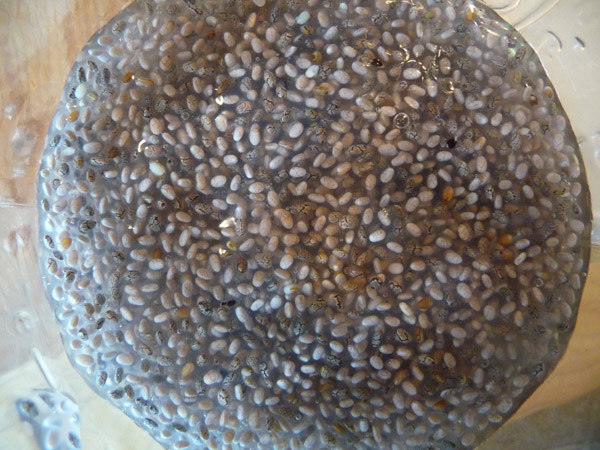
Hydrates the Body, Lubricates the Skin and Intestines
Chia is a hydrophilic seed, which means it can absorb large quantities of water. This essentially produces a mucilaginous gel-like coating around the seed which can be very hydrating to the body when consumed. This is one of the primary reasons they are often added to many commercial health food drinks.
The soaked seeds are very soothing to the mucus membranes and digestive tract, acting as a mild laxative that can be extremely beneficial to the health of the colon.
Chia has a natural cooling effect on the body, potentially helpful for inflamed conditions, and is especially moisturizing to the skin when ingested.
An Endurance Food
Chia is known as an "endurance food" that nourishes the cells and tissues by prolonging hydration, time releasing nutrient absorption, regulating glandular activity of the adrenals and thyroid and providing electrolyte balance.
The gelling properties of chia also help to slow the conversion of carbohydrates into sugar, providing a long burning fuel source. These attributes can be beneficial for diabetics, who need to maintain blood sugar levels, as well as athletes or those who maintain high degrees of physically activity.
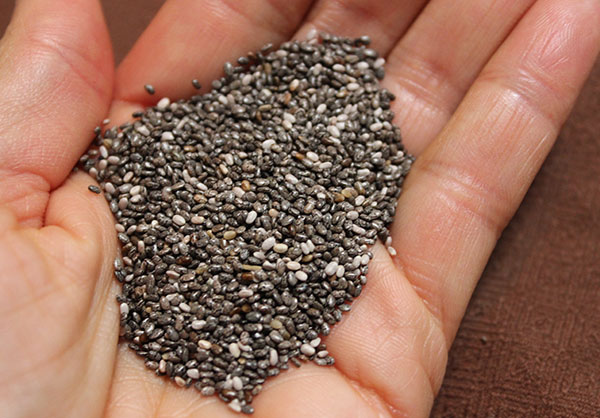
Beneficial for Weight Loss
Visit our chia for weight loss page for more info.
Chia is high in dietary fiber. Fibrous foods help to slow down the digestive process and act as a natural appetite suppressant. Along with a health promoting diet and lifestyle, chia seeds can be a great low calorie addition to daily meals for those wanting to loose excess body weight.
As a mild laxative, blended chia drinks can also help to normalize bowel movements, another beneficial feature for encouraging weight loss.
Chia Seed Nutrition
Chia seeds provide the body with protein, minerals, vitamins and trace nutrients. They are about 16% protein and include all essential amino acids needed by the body for proper muscle growth, tissue repair and many other bodily functions.
High in Calcium and Magnesium
The seeds are a good source of calcium and magnesium, with a one ounce serving size delivering about 18% of the daily requirement for calcium and 28% for magnesium, based on an adult 2,000 calorie diet.
They also have trace amounts of boron, a mineral that works with calcium to support bone density and inhibit the risk of osteoporosis. Chia is a good source of the b-vitamins, niacin and thiamine.
Chia Seed Nutrition List
(One Ounce or about 2T)
Calcium - 177mg 18% DV
Magnesium - 100.6g 28% DV
Phosphorus - 265mg 27% DV
Manganese - 0.6mg 30% DV
Niacin - 2.75mg 18% DV
Thiamine - 0.18mg 16% DV
Iron - 2.3mg 16% DV
Zinc - 1.0mg 7% DV
Copper - 0.1mg 3% DV
Potassium - 44.8mg 1% DV
(Daily Value based on a 2000 calorie diet)
How to Use
Whole Chia
Chia seeds are most commonly available for sale as a whole seed. They can be purchased in bulk quantities, by the pound.
Remember, a little goes a long way because of their hydrophilic expanding nature. They come in both white and black varieties. The white colored seeds are great for frosting's or vanilla puddings..
Ground Chia
Ground chia "flour" or powder is also sold these days, but for nutritional purposes we always recommend buying the whole seeds and grinding them up yourself for greater freshness.
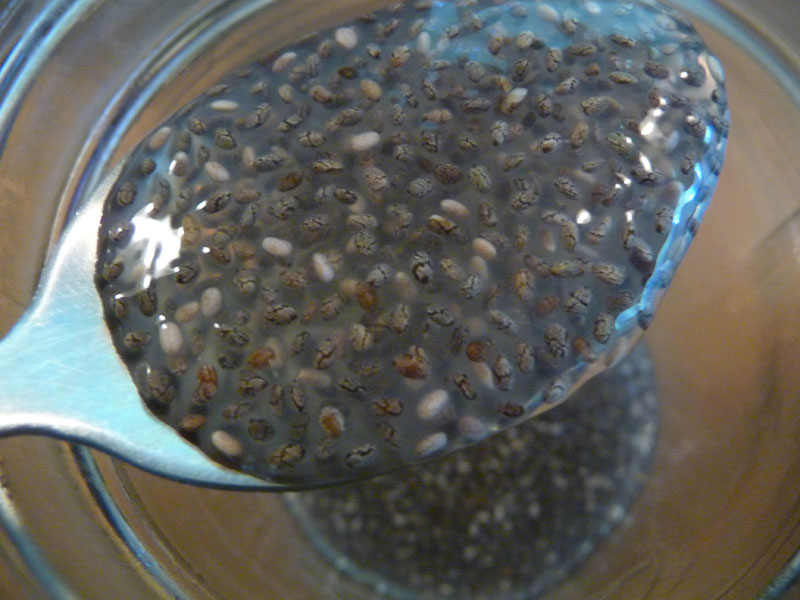
Soaking Chia
To use the seeds, we encourage soaking them first and using the "seed gel" blended into drinks or other recipes. In our opinion, they are more easily digested in this form. Experiment for yourself, however, if you really enjoy eating the whole soaked seeds.
Remember, they will absorb between 10-12 times their volume in water and in less than 20-30 minutes your jar of seeds and water will become a thick gelatinous mass.
We largely discourage eating dry whole chia seeds because, like flax, they are number one: not very tasty and number two: will tend to cause intestinal discomfort.
The measurement ratio we like to use is:
1/4C seeds - 1 1/2C water
Or
2T seeds - 3/4C water
You can store the soaked seeds in a jar in your fridge for up to 2 weeks and have them on hand whenever a recipe calls.
For therapeutic effects as a laxative we recommend 2-3T soaked chia seeds added to smoothies or shakes.
Chia seeds are a great substitute for flax and can be used in combination with other natural thickening agents, like coconut oil, psyllium seeds or irish moss.
Precautions:
Excessive consumption of chia seeds with inadequate amounts of water may cause constipation as well as intestinal discomfort, which may aggravate certain gastrointestinal disorders. Seek the advice of your health care provider if you have serious health issues or are taking prescribed medications.
Shop Related Products (About Affiliates & Amazon Associate Paid Links)
Affiliate Disclaimer: This section contains affiliate product links. If you make a purchase through our recommended links, we receive a small commission at no additional cost to you. Thanks for the support.
